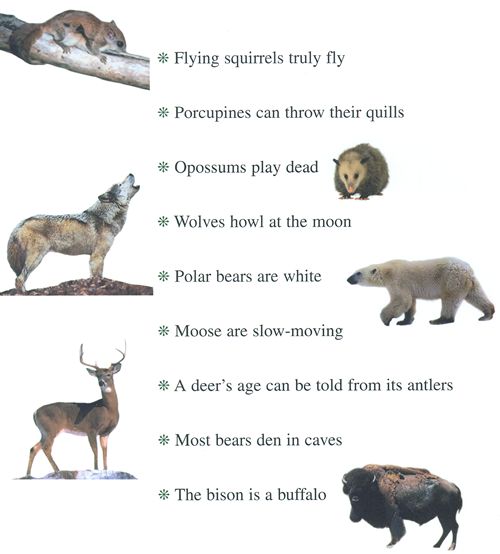

On this page, I'll feature examples
of various wildlife fallacies, both those contained in my book and new
ones, as I run across them. This page will change each month, so come
back to visit.
One of the most common wildlife fallacies that I encounter is that great blue herons (Ardea herodias) are "cranes" No doubt this mistaken identity occurs because both great blue herons and cranes are large, long-legged, long-necked wading birds. However, the two aren't even closely related: herons are in the family Ardeidae, while cranes reside in the family Gruidae.
The nesting and feeding habits of the two are very different. Cranes usually construct nests singly on the ground in marshy areas. Great blue herons, on the other hand, mostly nest in colonies in trees. Although both eat such things as fish, frogs, salamanders, small crustaceans, and similar creatures associated with wetlands, herons devour far more fish than do cranes. Cranes are more apt to stalk about in shallow water, grabbing whatever small prey they can find, while great blue herons are patient fishermen, often standing completely still in the water for long periods of time. Also, migrating sandhill cranes (Grus canadensis) feed heavily on wheat and other grains as they move south. For this reason, the flesh of sandhill cranes is very tasty, much like wild goose, and these abundant birds are hunted for their meat.
The method of flight is also quite different for herons and cranes. Members of the heron family, which includes such things as egrets, fly with their long necks looped back so that the head rests on the shoulders. Cranes, on the other hand, fly with head and neck extended straight forward.
Two or three years ago, I encountered a photograph of a "crane" decoy in a national magazine. The photo had been taken in a New England museum and was clearly a great blue heron. When I contacted the magazine to correct the error, they said that the museum had identified the decoy -incorrectly - as a crane. Old-time waterfowl hunters often placed a heron decoy among their duck and goose decoys. No doubt that was to give approaching waterfowl a feeling of confidence, because great blue herons are notably wary and often fly at great distances ahead of approaching humans.
